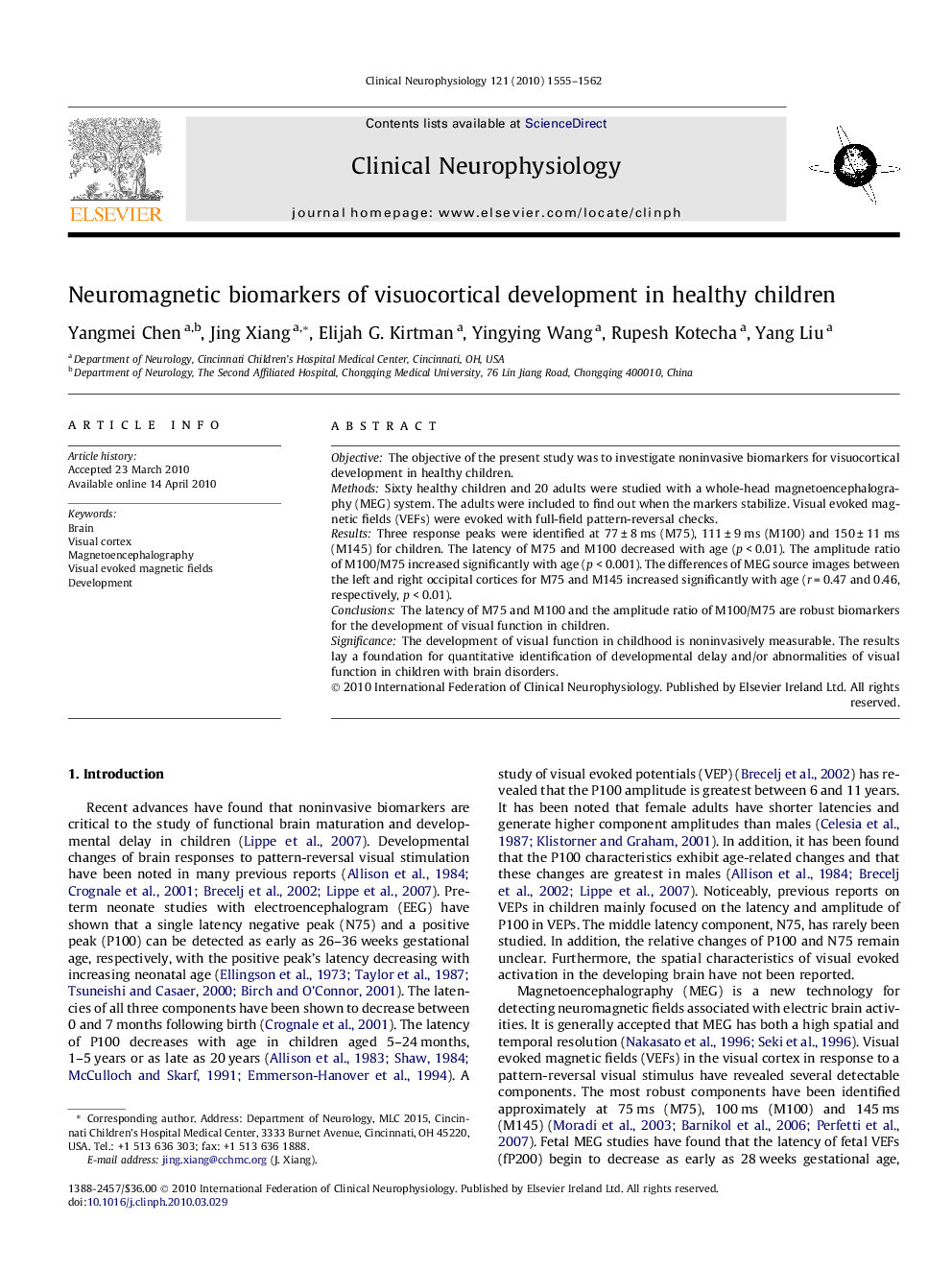| Article ID | Journal | Published Year | Pages | File Type |
|---|---|---|---|---|
| 3045602 | Clinical Neurophysiology | 2010 | 8 Pages |
ObjectiveThe objective of the present study was to investigate noninvasive biomarkers for visuocortical development in healthy children.MethodsSixty healthy children and 20 adults were studied with a whole-head magnetoencephalography (MEG) system. The adults were included to find out when the markers stabilize. Visual evoked magnetic fields (VEFs) were evoked with full-field pattern-reversal checks.ResultsThree response peaks were identified at 77 ± 8 ms (M75), 111 ± 9 ms (M100) and 150 ± 11 ms (M145) for children. The latency of M75 and M100 decreased with age (p < 0.01). The amplitude ratio of M100/M75 increased significantly with age (p < 0.001). The differences of MEG source images between the left and right occipital cortices for M75 and M145 increased significantly with age (r = 0.47 and 0.46, respectively, p < 0.01).ConclusionsThe latency of M75 and M100 and the amplitude ratio of M100/M75 are robust biomarkers for the development of visual function in children.SignificanceThe development of visual function in childhood is noninvasively measurable. The results lay a foundation for quantitative identification of developmental delay and/or abnormalities of visual function in children with brain disorders.
